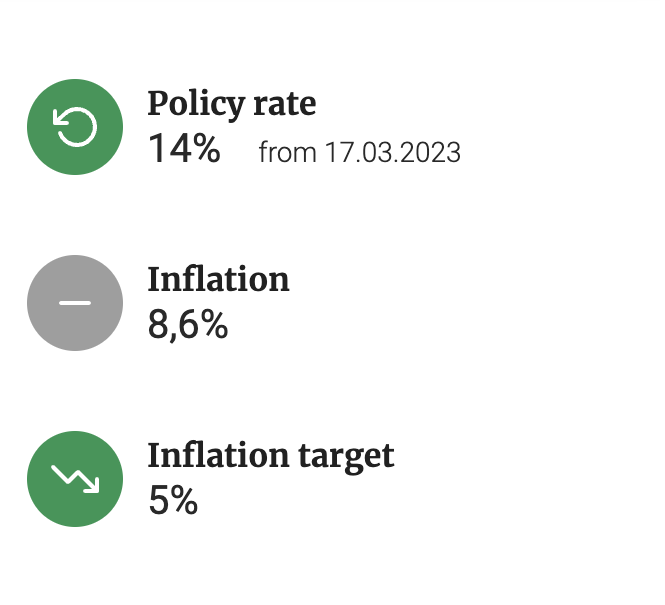The Central Bank of Uzbekistan has revised its inflation forecast for the year 2024, projecting it to be between 9-11%. This adjustment comes as the bank's board decided to maintain the key interest rate at 14% per annum for the ninth consecutive time during its meeting on April 25. The regulator stated that current monetary conditions are relatively tight compared to the upper limit of the updated inflation forecast corridor.

The Central Bank highlighted increasing risks to achieving the core inflation forecast, indicating that if there is a significant surge in people's inflation expectations in the coming periods, appropriate measures will be taken to adjust monetary conditions accordingly. Under the updated macroeconomic expectations, the forecast for headline inflation in 2024, as per the core scenario, has been elevated to a range of 9-11%, up from the initial projection of 8-9%.
The upward revision of the overall inflation forecast is attributed to the higher-than-expected growth of regulated prices, which exceeded the initial estimates considered in the macroeconomic projections outlined in the primary monetary policy guidelines.
Regarding the dynamics of the real effective exchange rate since the beginning of the year, it has weakened by 0.9%, remaining within the long-term trend. However, considering the exchange rate and inflation forecasts of foreign trading partners, there appears to be relatively little pressure on the real effective exchange rate. According to the updated forecasts, GDP growth is expected to range between 5.2-5.7% by the end of the year.
The projected inflation by IMF for 2024 remains elevated at 11.6%, albeit showing a slight decrease of 0.4% compared to the forecast made in October 2023. However, this figure represents a 1.6% increase from the previous year's reported inflation rate of 10%.
Looking ahead, the IMF foresees a decline in inflation to 9.7% in 2025, as the impact of current policies stabilizes. This anticipated reduction is attributed to improved agricultural output, resulting in decreased food price volatility, and enhancements in the supply chain.
Comments (0)